Our Creative Director Matt Slightam put together a follow-up to his very popular live session 'An Introduction To Designing & Selling Digital Design Products'. It goes into more detail on exactly how it's done, using the fantastically talented Julia Dreams's latest pack. He will take you all the way from how we came up with the product idea and matched that to a designer's talent to how we worked with Julia to put the product scope together, transitioned to the design phase and presentation phase, and finally how we launched the pack. There will be loads of great takeaways for your work!
Products featured in this session
Understand Background Research
When you are looking to create a product, do some background research for the product itself. Find out what you're going to create and immerse yourself in the category. Search for leading designers and best-selling products. Find out where the quality bar is for those best-selling products and where is it placed in marketplaces like Design Cuts. Then look at the scope of the product as well.
Understand Category
The first step is to look for the target category—hit marketplaces, such as Design Cuts, and seek out the best sellers. Understand their winning formula and what makes them the best. Find out what the quality is and how it varies within those different products. Think about your work in terms of the quality bar.
Create a product that could sell in Design Cuts because they only take the top percent of products and designers to work with. Look at the scope of the product. Find the differences in features and functionality between the best sellers and other products. Understand what products people are asking for and track people on social media. Seek an opportunity to elevate it further.
Find Leading Designers
A great way to find leading designers is to follow them on social media and look for opportunities to engage with them. Build relationships with them. Find a learning hub, watch some of the top designer’s sessions, and learn how to level up your work.
Understand Product Opportunity
Look for the talent in demand. Seek a unique element that will help in selling your product. Target all three of those things with a product opportunity. Search for marketplaces and see if the product is in demand. For example, Design Cuts' marketing department suggested a market demand for an art deco product when Matt reached out to them. There's always an opportunity to release a product, especially if its scope seems minimal.
The next step is to match the demand with the talent. In the case of this product, it was easy as Matt had worked with Julia Dreams previously. She's a fantastic illustrator who makes authentic patterns and products.
Understand Product Research
Release a product that’s not just new but unique too. Search for the most popular product and differentiate your product to make it exclusive. See the scope of the product and the places it can go.
Once you know which product to create, go back to the marketplace and compare your product with the best product in the marketplace. Understand what makes your product special. Find an opportunity to elevate your product above and beyond the competition.
For example, despite having tons of deco products, Julia’s pack was the best in the market. When Matt compared the product in the marketplace, he realized that the colorways option was missing. Most of the deco products were black and gold. The marketplace was also not strong on patterns.
The market also lacked creator elements, which made Julia’s pack stand out.
Pro tip: Go the extra mile to make the consumers happy.
Create a Scope
Once you've come up with the ideas and found the differentiators, create a scope for your product. Plan it out. Avoid rushing into the design phase. Decide on a name for the product, the scope, what it contains, the value proposition, and differentiators. Plan a price point and a launch price. Understand the target market for the product and decide a timeline for its release. Make sure to have people give you feedback. Plan the updates to push the product over time and remarket for ongoing sales.
Use Design Cuts' product scope document, which is available free on the Product Academy. It consists of guidelines that help you navigate the marketplace.
Understand the scope of the product. With regards to Julia’s product, there are 12 patterns and 130 elements, some of which could be taken from the patterns themselves and created into elements. There are bonus materials, borders, corner elements, etc. The scope changes as you develop the product and look at the value proposition for your product.
For example, Julia’s product holds several benefits. It makes deco design easy and is perfect for packaging labels, ceramic invites, wrapping fabric, menus, etc. This will influence how you make the product and its previews. Decide on the maximum number of end applications for the product. Look at compelling differentiators and make sure your product is better than the others. The product should have a unique edge, color elements, frames, beautiful textures, and colorways.
Define the problems your product solves. For example, Julia’s allows you to quickly create authentic deco designs. Look at the other products on the scope and position them at a competitive price point. If the price is super low, people will expect a lower value product. Make sure to bear that in mind.
Think about a launch price or a discount price to increase the ease of marketing. Think about the target market and settle on a timeline for the product. Pick a launch date to hold a goal for yourself.
Always ask for feedback. It will turbocharge your design process. Work on the feedback from experts and make edits to the product if needed.
Finally, think about updates. Create more marketing opportunities by updating the product later. Build up a community on Instagram and other social platforms through your website or newsletter. Talk to your community and build up a dialogue with the people who buy your products regularly.
Design Thoughtfully and Get Feedback
Once you've obtained a scope document, start with the design phase. Design slowly and thoughtfully. Get feedback along the way. Start with a mood board to get an initial design direction.
For example, Julia designed a mood board of all things inspirational to her. She added all the features she needed into the mood board and recognized its regularity. She recognized bold geometric lines, ethnic geometric patterns, midterm design, ivory, aluminium, redwood, and silver. She put them together to help create an authentic look of the final product right at the start.
Pro tip: Make sure to use a mood board as inspiration only. Do not copy anybody’s work. A mood board should only be put together to get authentic inspiration for your work, elevating and moving it forward.
Draw Initial Design Phase
Work on an initial design and rely on comments as well as feedback.
For example, Julia worked on getting a hard-edged design. Deco made her think of the twenties, business money, power, and style. She connected with a regal style.
Pro tip: Reach out and build relationships with other designers and use them as your virtual creative director. Don't be afraid of building relationships with well-established designers because they’ve been there and done it before. If you engage with them, the chances are that they will engage with you.
Test out ideas at this stage. For example, Julia put together a pattern creator where you could create your patterns. You could combine lines with colors and background patterns to make them in different colorways.
Get Feedback
Once you've got everything together, along with the ideas, switch into the presentation phase. The presentation is your main marketing channel for the product. Present the product well for it to sell. Always advocate and get feedback.
Use Preview Story
Use a preview story such as a book with a cover and introduction hooks to get people excited. Add a bonus to help them stick to your product.
Add a Cover
A great cover creates a great first impression. Your first interaction with the product after you hit search will be the product cover. If it doesn't have a good one that explains what’s in the product, people won't click on it. Ultimately, it won't make any sales.
For example, the first cover design that Julia presented is placed on the left side and the final look of the cover is on the right side. See the image below for reference.
Embed the cover in a grid of competing products and see how it compares with them. Make sure the cover is powerful and legible. Use the free Product Academy template and tick all its boxes.
Add a descriptive title and a logo for brand equity. The more people know about your brand, the better the chances of them buying the product. So when somebody buys this product, they'll get more brand equity and are likely to buy your next product.
Add the scope and what the product contains to underline the differentiation from other products. Make sure to add a bonus and use mockups to bridge the imagination gap. Add quality and compatibility and mention the product’s usage.
Add an Introduction
Set the scene, add a value proposition, benefits, differentiators. Mention the scope and the creation story for authenticity. Indulge and make a connection with the audience. Mention its unique selling point (USP) and how you enjoyed making the product. Show love and care by and add why it’s worth buying the product.
Add Hooks
The next step is to attract people with great hooks. Hooks are mock-ups and outcomes that are created with the product to prove its functionality. Make sure to add pre-made elements and offer solutions.
Bridge the imagination gap by not making people wonder if the product is any good. Excite the customer and add social proof in the mock-ups. Make sure to get feedback from other designers.
Add a Body
Add a body and get into the background of what's inside the product. Separate that into categories with logical clear call-outs and branding frames. Mention how the product functions and add its benefits. Mention the problems the product can solve.
Pro tip: Make sure the outcome engages with the audience.
Add detailed mockups as shown in the images below.
Add combining elements in the body as well as in the mockups. Show people how quick and easy it is to work with the product.
Add a Bonus
Include a bonus in your product for stronger marketing.
Finale
Seal the deal by adding previews. Finish by calling out the features, benefits, and compatibility of the product. Add a usage guide for your product and do some brand building as well.
Engage with the audience and think of a pre-launch and launch strategy. Create buzz and interest around your product before you launch it. The easiest way to do that is to build up your community or audience.
Reach out to other connections in different communities that can help you market your products as well. For example, Design Cuts has an audience of highly targeted designers. They push out emails to a targeted audience for promotional purposes on targeted platforms.
Add a discount at launch to help boost the initial sales.
Once the product is launched, add periodical updates and improve your product. Discuss the benefits and communicate with your audience. Building a community over time will help your product marketing.









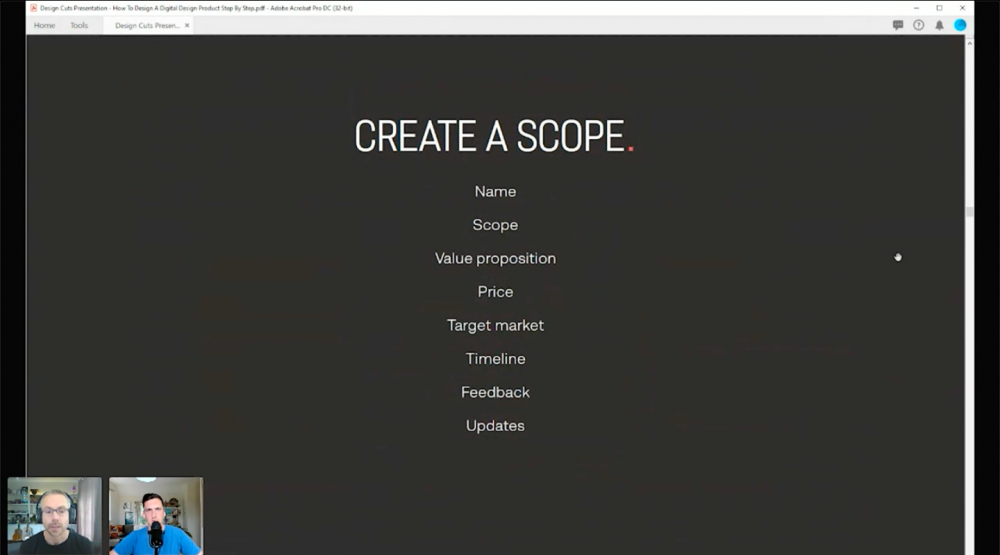


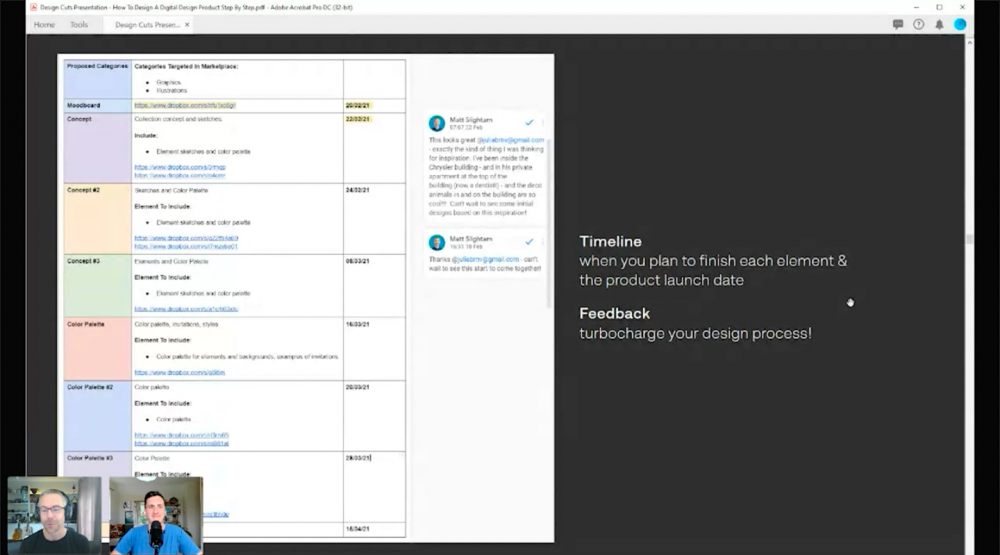



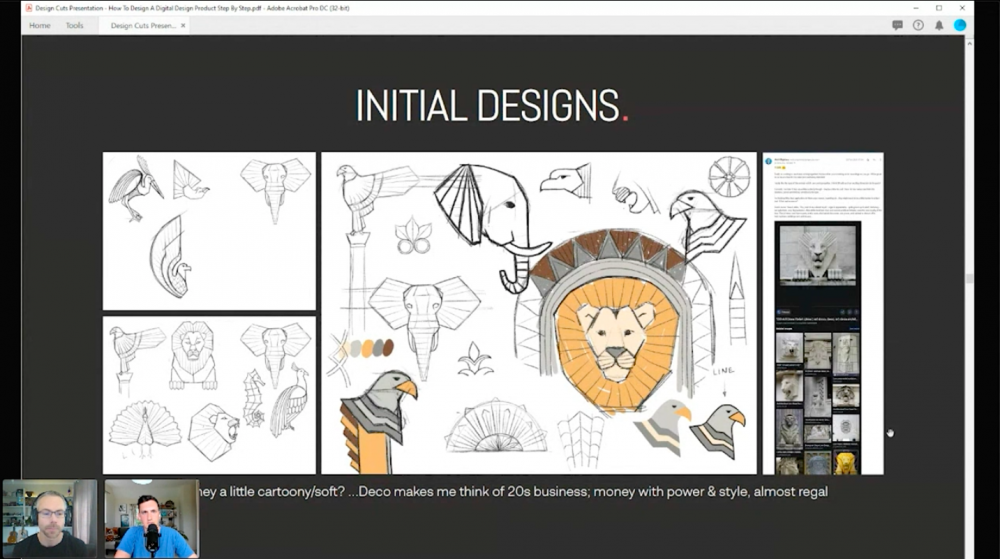
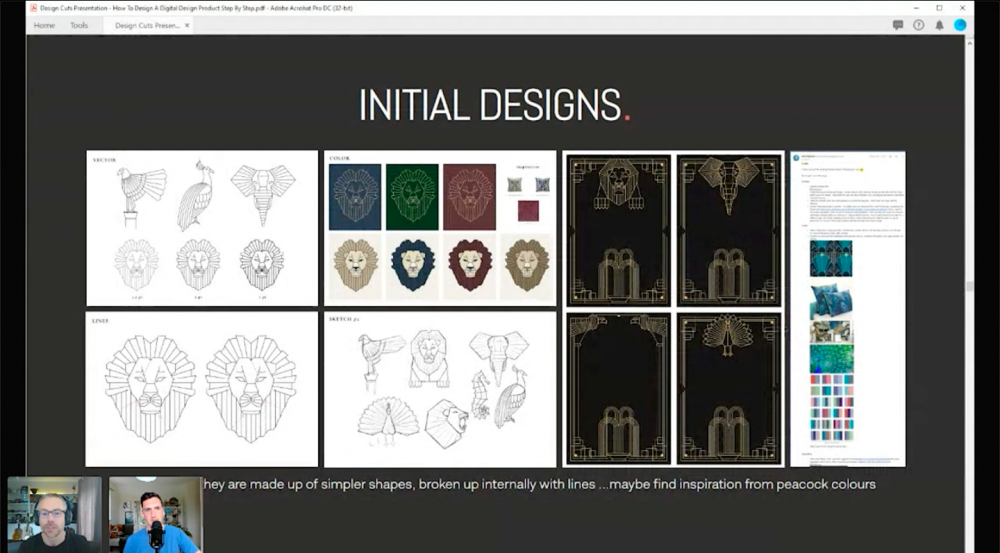












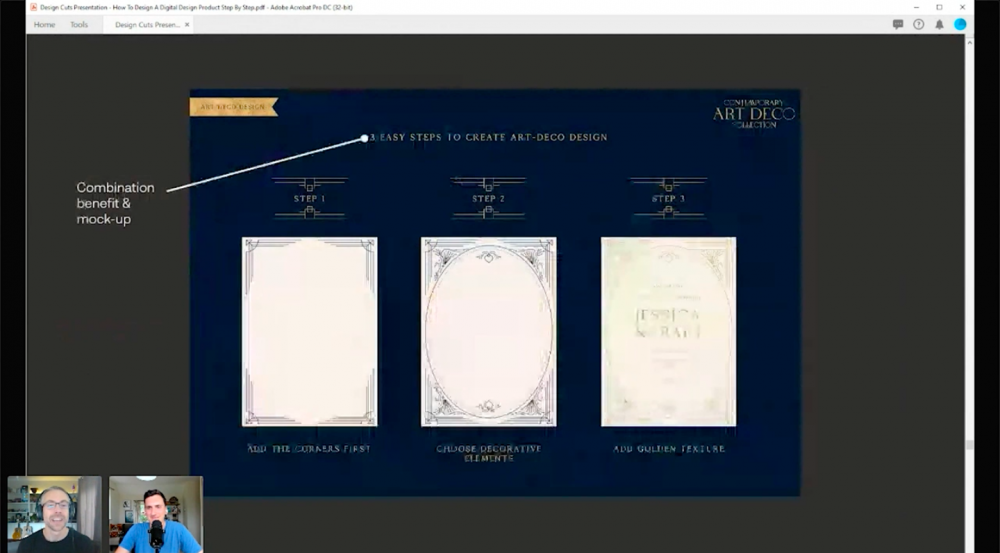
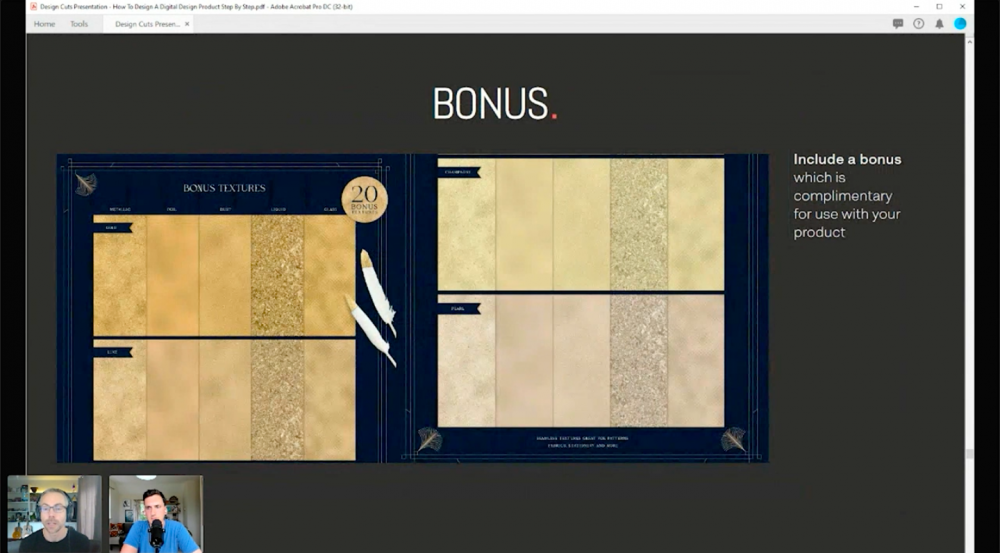
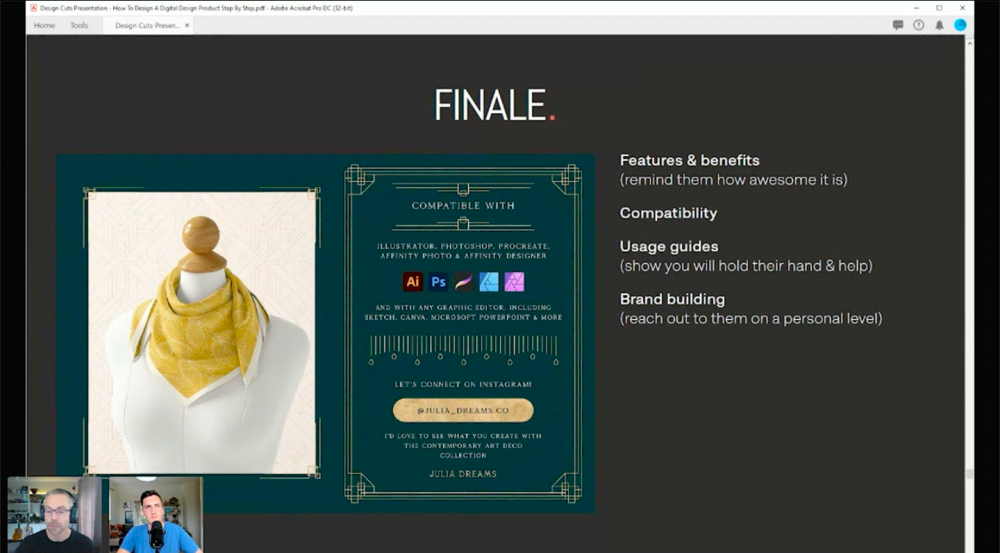

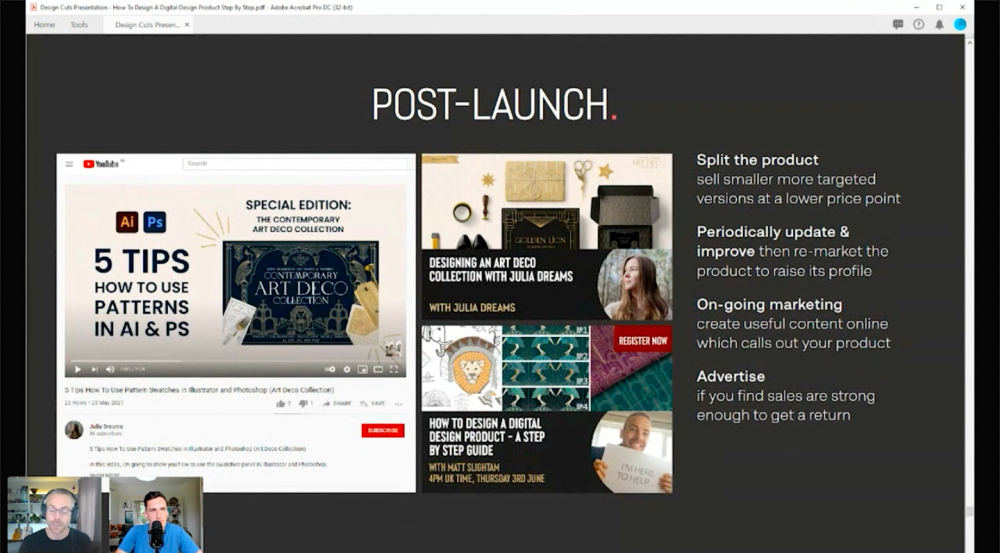



Perfect!!!
Woohoo we’re so happy to hear that you are excited for Matt’s session, Robson – we hope that you pick up some awesome new tips!
Thank you so much for your lovely comment! I’m really happy you enjoyed the session! :D